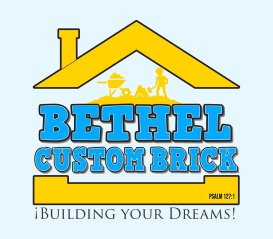Retaining walls are an essential component of effective landscaping, particularly for properties with uneven terrain or areas prone to water runoff. These structures not only add visual appeal to your outdoor spaces but also play a crucial role in controlling erosion and managing drainage. Here’s a closer look at how retaining walls contribute to stabilizing your landscape and improving water management.
1. Preventing Soil Erosion
One of the primary functions of retaining walls is to prevent soil erosion. By holding back soil on sloped areas, retaining walls create a barrier that keeps soil in place during heavy rains or strong winds. This prevents the loss of valuable topsoil and protects your landscaping from washouts, ensuring long-term stability and health for your plants and grass.
2. Managing Water Runoff
Uncontrolled water runoff can cause significant damage to your property, including flooding and soil erosion. Retaining walls help redirect and slow down water flow, minimizing its impact on your landscape. Properly designed retaining walls often include drainage solutions that ensure water is effectively channeled away from your home and garden.
3. Enhancing Drainage Systems
Retaining walls are often integrated with advanced drainage systems to manage groundwater and surface water effectively. Key drainage features include:
- Gravel Backfill: Helps water flow freely without building pressure behind the wall.
- Weep Holes: Allow water to escape, reducing hydrostatic pressure.
- Drainage Pipes: Direct water away from the wall and surrounding areas. These features work together to prevent water buildup, which can compromise the structural integrity of the wall and lead to costly repairs.
4. Creating Stable Landscapes
Retaining walls transform sloped areas into stable, usable spaces. By creating terraced levels, they reduce the risk of landslides or shifting soil, making your landscape safer and more functional. These terraces can also be used for planting gardens, adding visual interest and practicality to your outdoor space.
5. Protecting Foundations
For homes built on hillsides or near sloped terrain, retaining walls provide critical protection for the foundation. By stabilizing the soil and controlling water flow, these structures reduce the risk of foundation damage caused by shifting ground or water infiltration.
6. Boosting Property Value
A well-constructed retaining wall not only protects your landscape but also enhances its aesthetic and functional value. These walls add depth and dimension to your property, making it more visually appealing and increasing its market value. Prospective buyers often see retaining walls as a sign of well-maintained, thoughtfully designed outdoor spaces.
Tips for Effective Erosion and Drainage Control with Retaining Walls
- Work with Professionals: Ensure your retaining wall is designed and installed by experienced masons who understand the unique challenges of your landscape.
- Incorporate Drainage Solutions: Proper drainage is essential to the longevity and effectiveness of your retaining wall.
- Choose Durable Materials: Opt for materials like brick, stone, or concrete that can withstand environmental pressures and last for decades.
Partner with Bethel Custom Brick for Retaining Wall Solutions
At Bethel Custom Brick, we specialize in designing and building retaining walls that combine functionality and beauty. Serving the Detroit Metro area, our team ensures your retaining walls effectively control erosion and drainage while enhancing your property’s aesthetic appeal. Contact us today to learn how we can help protect and elevate your outdoor spaces with custom masonry retaining walls!


